The Mid-Century Modernist: Dorothy Liebes
Known today as the “mother of modern weaving,” Dorothy Liebes had a monumental impact on textile design. She sparked a new wave of fabric production with her unconventional materials, unusual textures and boldly imaginative motifs. During her lifetime she became one of most successful and influential designers of the entire 20th century, with an incredible five decade-long career that spanned the entire second half of the 20th century. From functional hand-weaving and public art to industrial design, her legacy of fabric production is vast and widely influential, and came to typify the textile aesthetic of the mid-century modern era. She argued that the simple art of weaving could produce magical, alchemic results, noting: “You can produce beautiful results from the humblest, crudest materials with the simplest of tools – merely by imagination, good taste and work.”
Liebes was born as Dorothy Wright in Santa Rosa, California, in 1897, to two teacher parents. Initially she followed in her parents’ footsteps, taking up training in art education at San Jose State Teachers College. By the time of her graduation in 1919 Liebes was already feeling a pull towards the practice of weaving, which she had begun practicing at home on a small wooden loom that she painted bright, brick red. She studied weaving classes at Chicago’s Hull-House, followed by a second bachelor degree in decorative art, architecture and applied textile design with the University of California. From here, she took up a master’s degree in art education at Colombia University.
After marrying Leon Liebes, the heir to a San Francisco department store, Liebes began travelling to learn traditional weaving techniques, visiting France, Sweden, Italy, Mexico, Guatemala, Japan and India. She was particularly fascinated by the Guatemalan weaving processes, observing, “I always remember watching the Guatemalan weavers… the calm way in which they suddenly stop throwing the shuttle to enrich the stretched newly woven cloth with needlework or drawn work… They do beautiful things.” Building on this vast and in-depth experience, Liebes opened her own weaving and textile studio in San Francisco, creating a team of weaving assistants. In 1934 Liebes established her business Dorothy Liebes Design, Inc., which she took to New York in 1952.
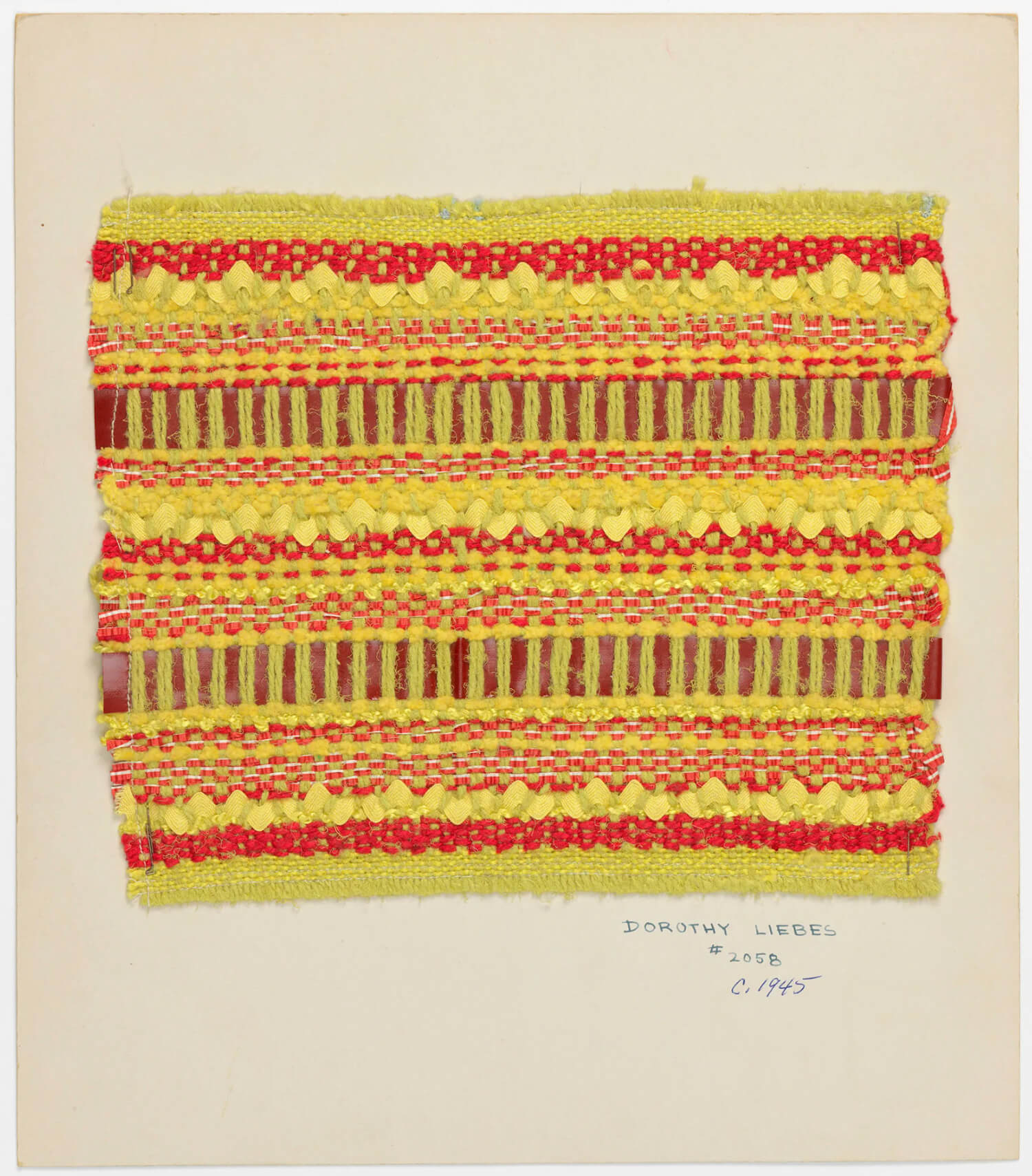
Sample card, co 1945. Designed by Dorothy Wright Liebes; plain-woven cotton, viscose rayon, silk, imitation leather (styrene/butyl methacrylate), zein-coated cotton woven tape
Describing her studio as a laboratory, she encouraged experimentation with materials, exploring a wide range of unusual and inexpensive substances including metallic threads and feathers. Together they created hand-loomed fabrics that would become dresses, drapes and upholstery with a unique, tactile sensibility, featuring wide hanging loops and intricate ornamentation. Liebes explained her studio approach to materials in an interview in the 1940s, “We can weave with unlimited materials – string, trimmings, braids, ribbons, oilcloth, cork, wood strips, reed, lace, paper, pine needles and leather. We can use all kinds of scraps, which is not only good citizenship in the conversations sense, but conducive to exciting and interesting textures.”
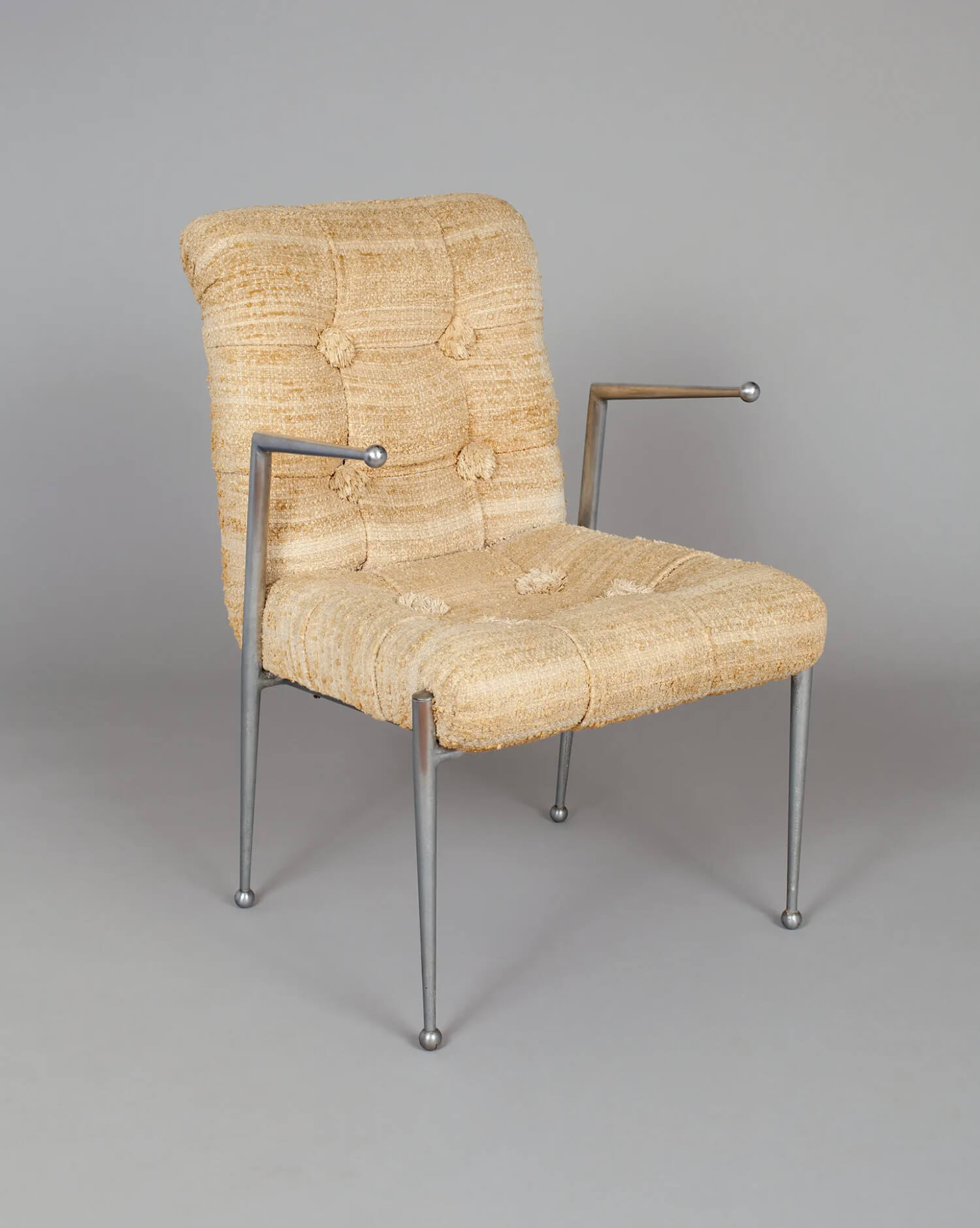
Armchair, Chicago, Illinois, 1938. Designed by Donald Deskey; manufactured by Royal Metal Manufacturing Company; upholstery designed by Dorothy Liebes; chrome-plated metal and upholstered fabric
Key to Liebes’ practice as her career progressed was her endlessly inventive approach to colour, which became known as the ‘Liebes look.’ Her signature colour combination included “a dark, a light and a bright,” coupling vivid, saturated rainbow hues with shimmering metallic surfaces and areas of rich texture. Keeping her weaving processes simple meant Liebes was freer to play with a bold aesthetic, as she explained, “The simpler the mechanics of weaving… the greater the freedom for one’s imagination to play and improvise with colour and texture and design.”
Treating each design like a work of art led Liebes into the production of one-off fabric commissions including curtains, screens and room dividers for a series of public and private interior spaces including the Persian Room at the Plaza Hotel, the United Nations Delegates Dining Room and Frank Lloyd Wright’s Taliesin West. When brought into modernist architectural spaces, her densely worked, tactile and colourful designs brought in warmth and texture, exemplifying the shift away from the minimal, austere sensibilities of modernism, and the dawn of the mid-century style.





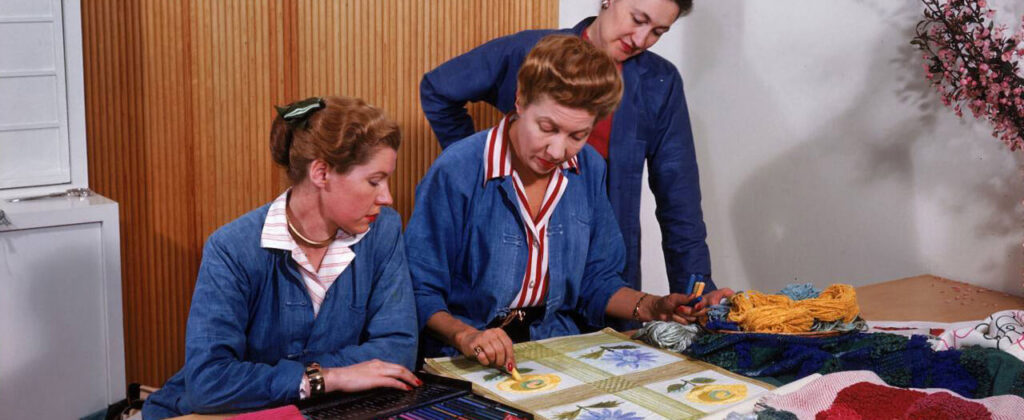
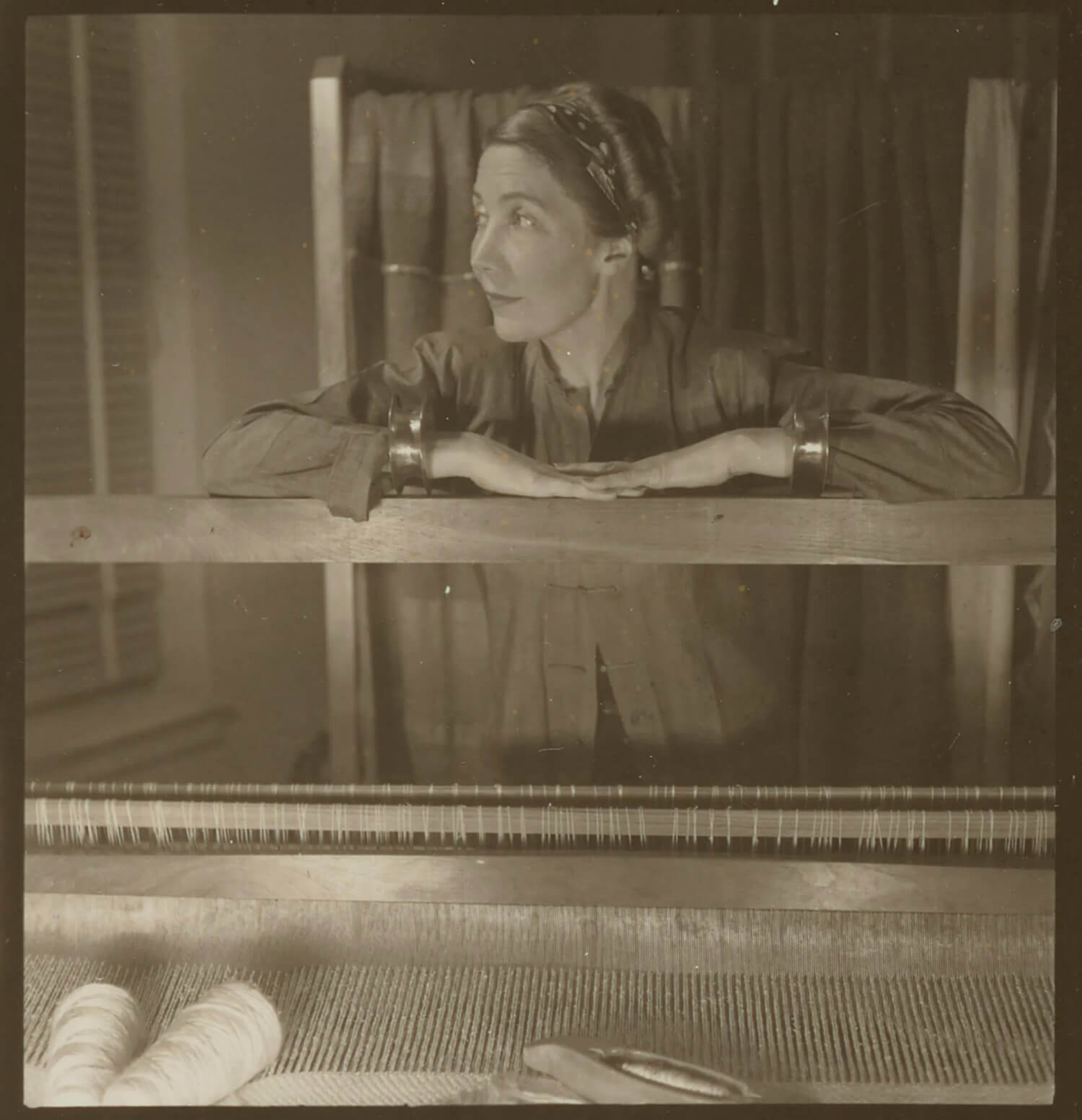
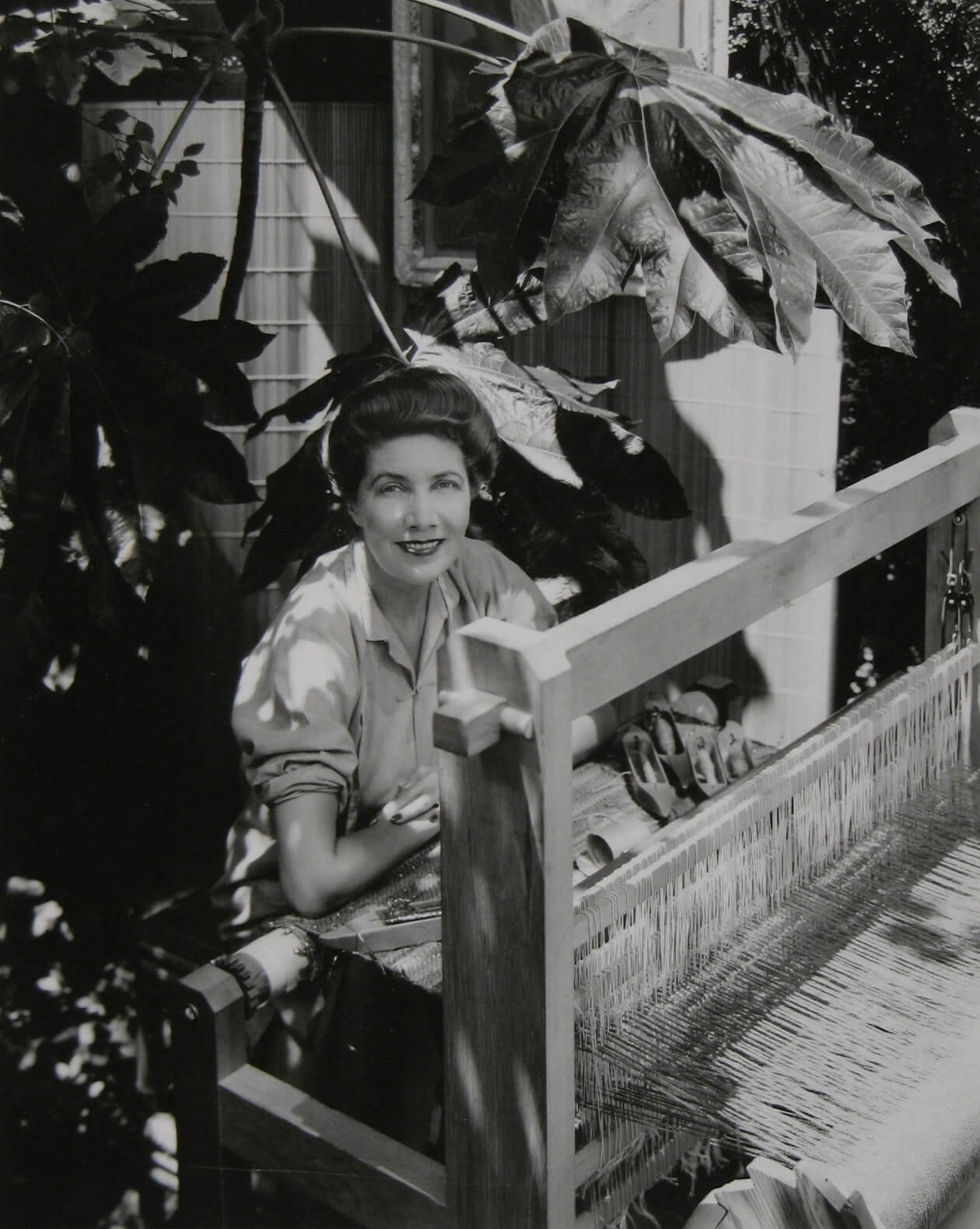
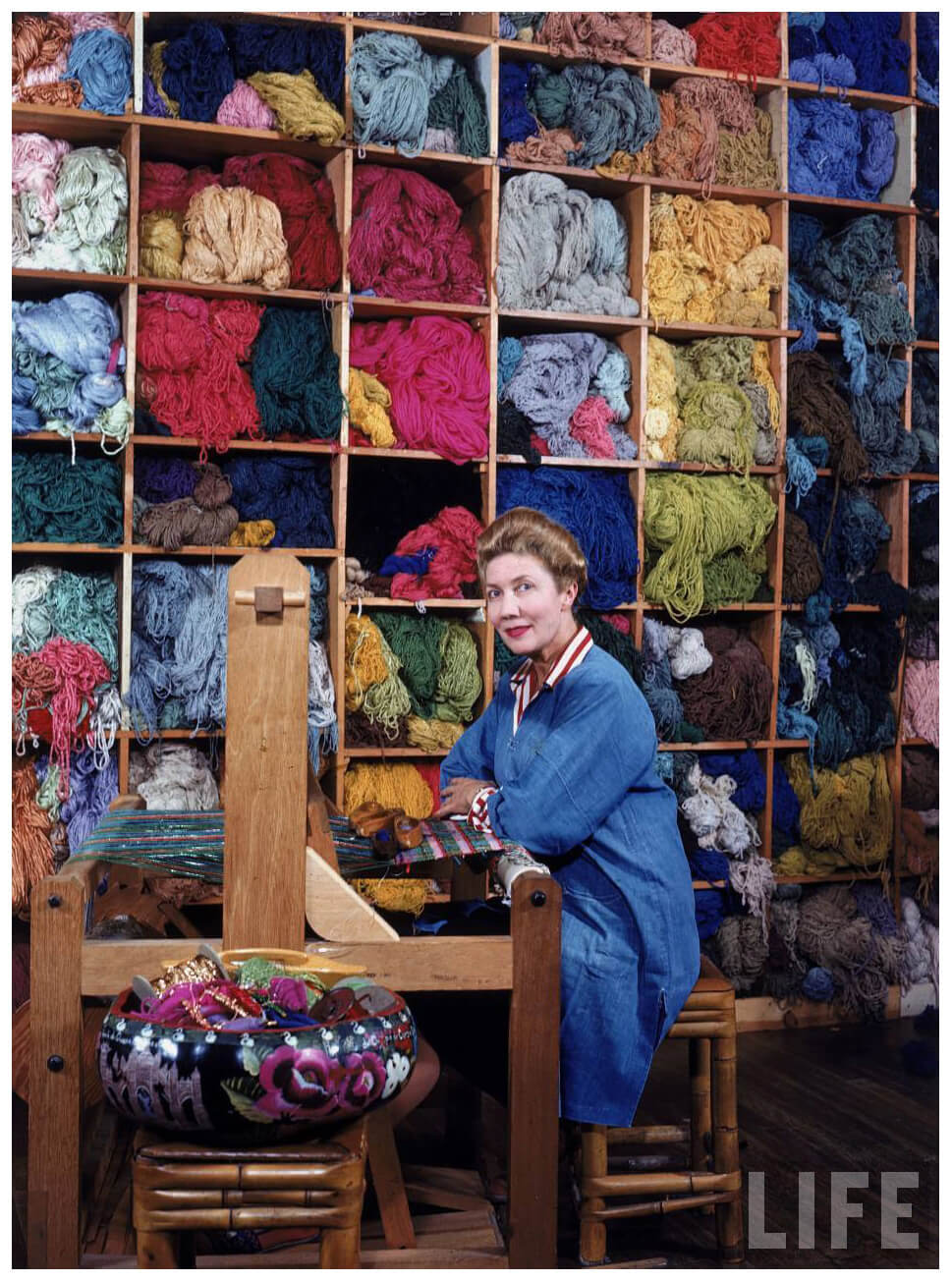
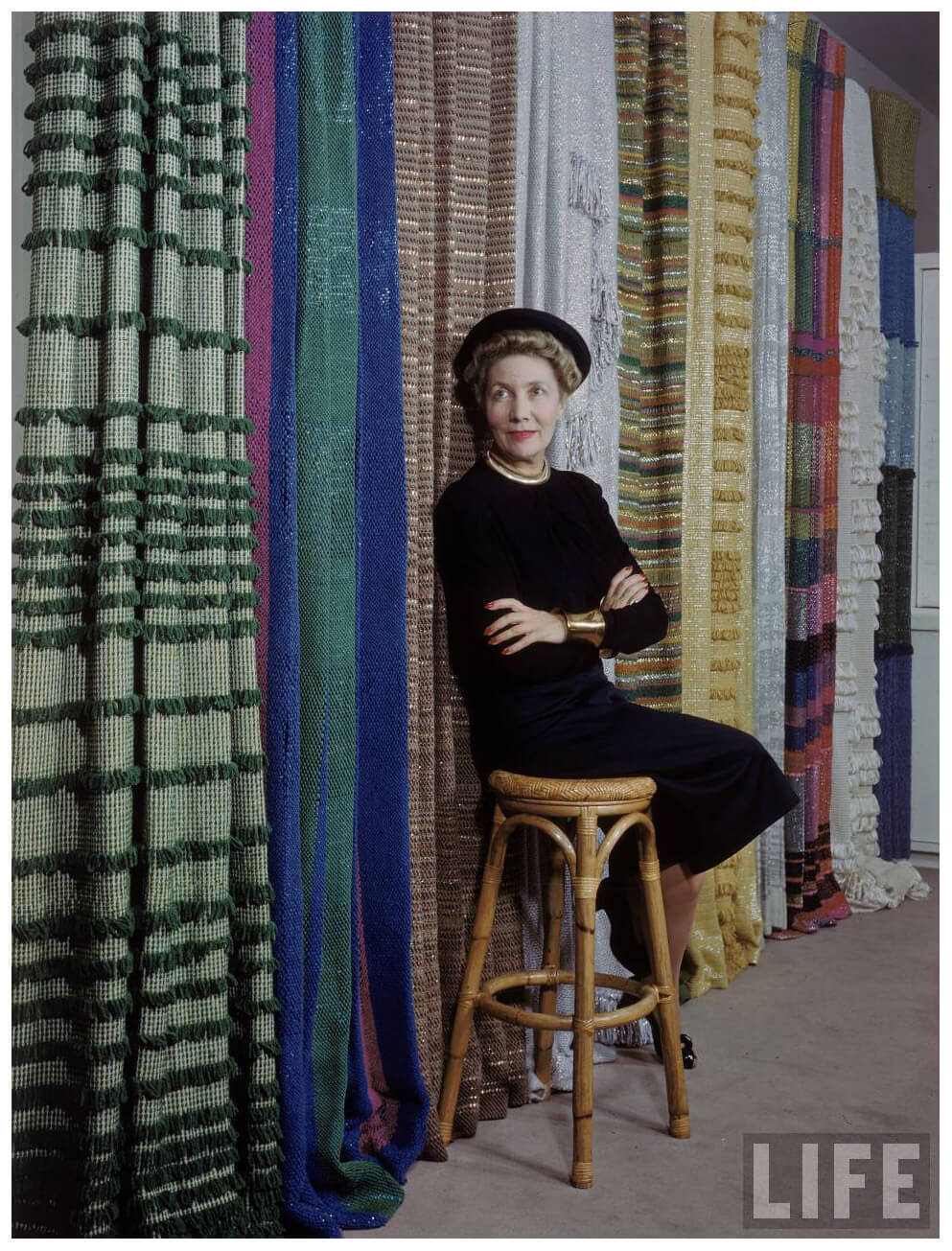
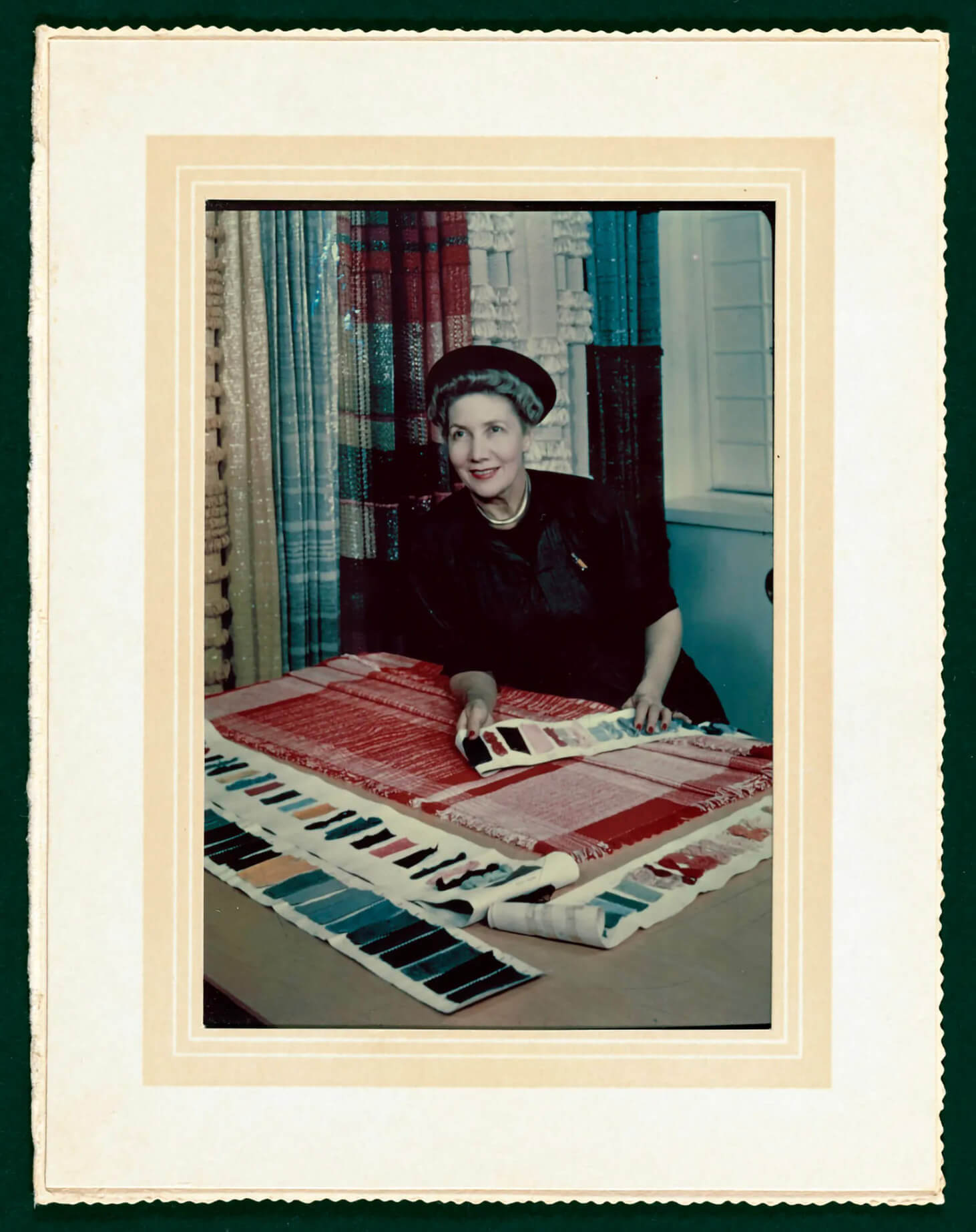








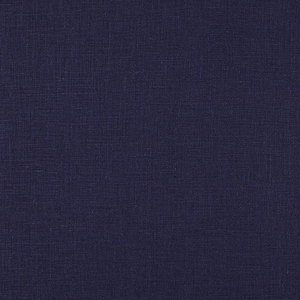





















4 Comments
miao kuancha
Thank you for another wonderful addition to this learner’s library.
Barbara Hoffman
Here is a link to an online exhibit of her work just starting at the Cooper Hewitt Museum
https://www.cooperhewitt.org/channel/dorothy-liebes/
Sarah Haskell
Thank you for this thoughtful article honoring a true icon of our textile history. I especially appreciate the quotes you selected ….. these will be savored and reread. Plus seeing images of Dorothy at her loom as a young woman! Thanks!
Michelle Sebik
Thank you for the article Rosie, as a weaver myself it is wonderful to read and be inspired by others.